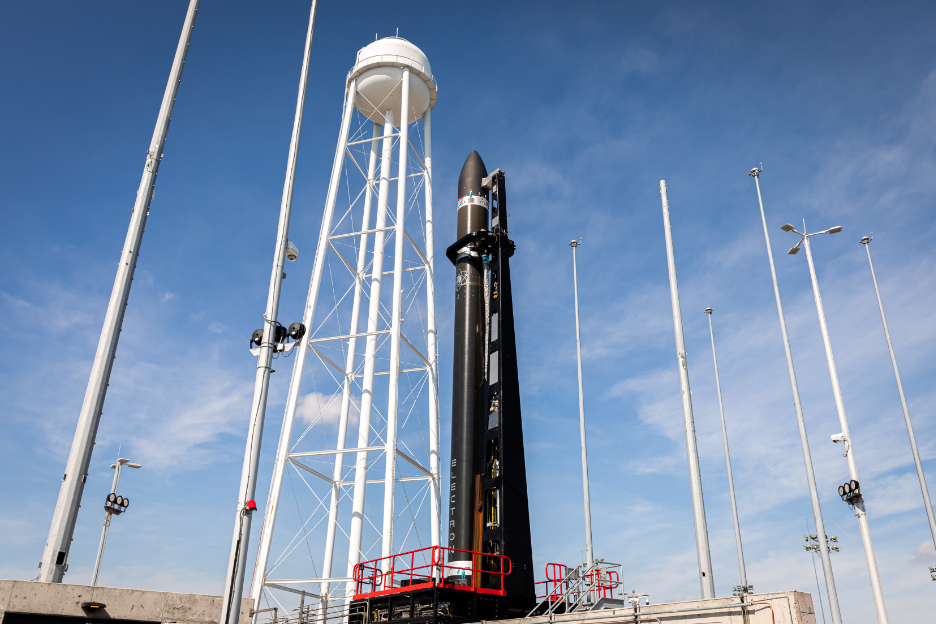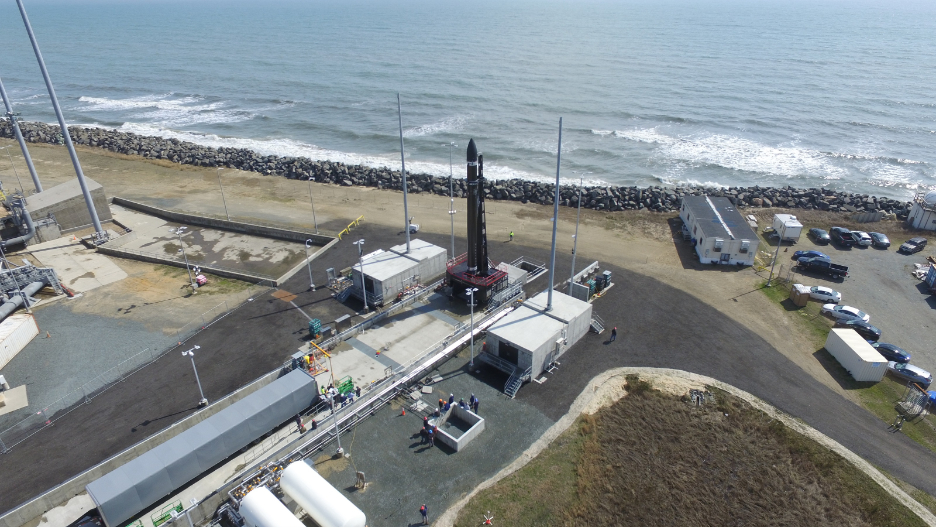
Rocket Lab has rolled an Electron launch vehicle out to the Launch Complex 2 pad at the Mid-Atlantic Regional Spaceport in Wallops, Virginia for the first time.
The milestone is one of the final steps ahead of Rocket Lab’s first launch from Launch Complex 2 – a dedicated mission in partnership with the Department of Defense’s Space Test Program and the Space and Missile Systems Center’s Small Launch and Targets Division.
Rocket Lab engineers and technicians carried out a range of successful integrated systems tests to verify launch systems on Electron and on the ground systems at Launch Complex 2. The critical checks included raising Electron vertical on the Launch Complex 2 pad for the first time, activating and tuning pad fluid systems, power and communication checkouts, as well as RF testing with the range. The test campaign concluded with a hot ignition test of the nine Rutherford engines on Electron’s first stage.
The STP-27RM mission will launch a single smallsat from the Air Force Research Laboratory’s Monolith program, which is designed to determine the ability of small satellites to support large aperture payloads to monitor space weather. The mission is being coordinated by the U.S. Space Force’s Space and Missile Systems Center and is scheduled to launch no earlier than the third quarter of 2020.
One of the final remaining steps before lift-off from Launch Complex 2 is completion of NASA certification for Rocket Lab’s Autonomous Flight Termination System (AFTS), a system that has already been successfully flown on several missions from Rocket Lab Launch Complex 1 in New Zealand. NASA expects to complete the certification in time for the Q3 launch window. The STP-27RM mission will mark the first time an AFTS system has flown from the Mid-Atlantic Regional Spaceport and represents a valuable new capability for the spaceport.
AFTS is a GPS-aided, computer-controlled system designed to terminate an off-nominal flight, replacing traditional human-in-the-loop monitoring systems. AFTS is crucial to increasing launch frequency and providing responsive launch capability, while maintaining the highest industry safety standards. It reduces the turnaround time between missions and provides greater schedule control by eliminating reliance on ground-assets and human flight termination operators.
With Launch Complex 2 complete and entering an operational phase, work continues on the construction of a Rocket Lab Integration and Control Facility nearby, which will house a launch control center, payload integration facilities, offices, and a pre-launch integration area for multiple Electron vehicles.
Future missions scheduled for lift-off from Launch Complex 2 include a pathfinding mission for NASA to the Moon called CAPSTONE (Cislunar Autonomous Positioning System Technology Operations and Navigation Experiment). The mission will see a NASA satellite launched to a unique near rectilinear halo orbit around the Moon to determine navigational capabilities for future missions. Data gathered by this mission will inform NASA’s plans for Gateway – a space station planned for lunar orbit that will act as an outpost for astronauts before they descend to the lunar surface. The CAPSTONE mission is currently scheduled to launch in early 2021.
David Pierce, Wallops Flight Facility Director, said that for almost 20 years, NASA and the DoD have been working to develop an AFTS system that is available for use by all Range Users within ITAR (International Traffic in Arms Regulations) that can greatly reduce the cost of access to space. Through the organization’s partnership with Rocket Lab on previous Electron launches and on this historic U.S. Air Force mission, Wallops is able to further the efforts to commercialize AFTS and increase launch responsiveness at U.S. ranges.
Peter Beck, Rocket Lab founder and Chief Executive, stated the upcoming mission from Launch Complex 2 marks the beginning of rapid, responsive smallsat launch capability for U.S. government missions from U.S. soil. He noted the company s proud to be partnering with the U.S. Space Force for the first mission from Launch Complex 2 and honored to be working with them again following previous STP missions out of Launch Complex 1. For more than two years, Rocket Lab has been providing responsive, dedicated and reliable access to space for government missions, and now we’re proud to be building on that strong heritage with our first mission from the United States. Combined, the two launch sites can support more than 130 launch opportunities every year, enabling unmatched schedule control for smallsat operators to respond to unfolding opportunities in LEO and beyond.

Rocket Lab and the Electron Launch Vehicle at Launch Complex 2.
